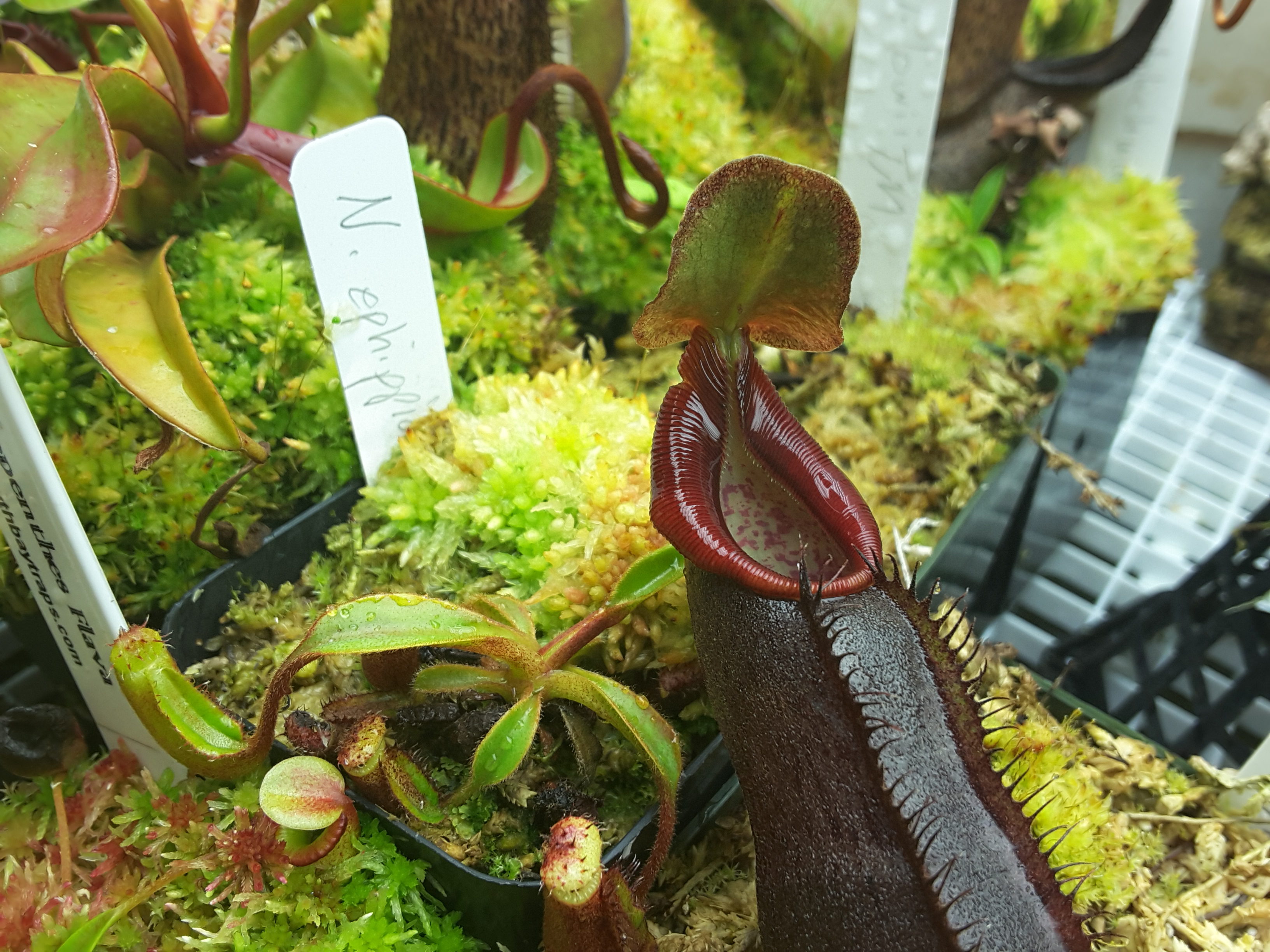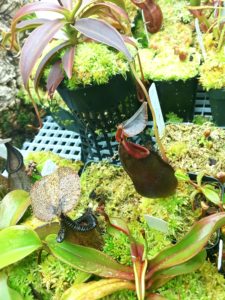
Nepenthes izumiae cultivation notes and care guide
Nepenthes izumiae in cultivation
Asian Pitcher plant species: Sumatra, Indonesia
Altitude: 1700-1900 (5577-6234 feet) meters above sea level
Nepenthes izumiae is one of my favorite species because of its dark colored pitchers and wicked toothy peristome. I currently have 4 different individual N. izumiae, one is from Borneo Exotics that I got from California Carnivores, a seed grown originally from Exotica Plants that I ordered through Native Exotics and two seed grown from SBT.They have all been a very slow grower for me so far which can really be either a pro or a con depending on how you look at it. It’s snail-like pace can be a benefit if your grow space is limited as it will give you years of enjoyment before it ever takes over your grow area.
According to Stewart McPhearson in Pitcher Plants of the Old World Volume Two N. izumiae very consistently exhibits dark almost black coloration and the minority are lighter or green in color. This means that almost any that you will see in cultivation will be the nice dark color that you would see from expedition pictures on wikipedia etc. Some other species are less consistent with color and so can look very different that the photos and descriptions.
This species has not been especially difficult, but it did take its time (~6 Months) without pitchers to adjust to my growing conditions. For me even the small pitchers have been awesome with super dark color which more than makes up for their slow nature. Due to the pace which they already have I haven’t really pushed their limits with my cultivation but I imagine that it would only extend the acclimation but they would eventually make a lot of conditions work.
This species is definitely one that will require a few years to truly gauge how it does so I will most likely be updating this is the somewhat near future in order to account for how they perform in the coming years. All in all if you are thinking of getting this species I definitely recommend it just be aware that it is a commitment. I anyone has experience with N. izumiae you can share please let me know in the comments below!
Nepenthes izumiae Cultivation and Care Notes
- Very slow grower, especially my Borneo Exotics tissue culture clone. Time will tell if seedgrown grow faster.
- Is from mossy forest and appreciates higher humidity and sphagnum moss.
- Tissue Culture and Seed grown plants available.
- Moderately rare in cultivation, slower grower compared to other highland Nepenthes so that could possible contribute.
- Has no problems growing happily in intermediate with days around 85F (29C) and nights around 65F (18C)
Find information about Nepenthes izumiae hybrids here
More information available at Nepenthes izumiae wiki
If you want to learn more about cultivation of carnivorous plants, I highly recommend the comprehensive grow guide The Savage Garden, Revised: Cultivating Carnivorous Plants by Peter D,Amato. It is very easy to follow and reference and contains pictures and cultivation techniques for every genus of carnivorous plants.
If you want to learn more about Nepenthes or other pitcher plants, and see pictures of these spectacular species in the wild, I highly recommend reading Pitcher Plants of the Old World Volume One and Pitcher Plants of the Old World Volume Two
3 Comments
Any ideas, observations or personal experience with Nepenthes izumiae? Please let me know in the comments below.
I have been growing this plant for 10 months and it seems like an easy grower. My temperatures are pretty similar to yours. The plants do seem on the slow side although mine didn’t have any trouble pitchering. I got them from BCP. The dark pitchers are definitely alluring.
I agree! I have the one from BE and two from SouthBay and they are all varying degrees of slow but still going, and the color for me makes it worth it definately a fascinating species!

![Nepenthes izumiae from EP with a young N. ephippiata from JH [Photo: July 8, 2016]](https://youplants.com/wp-content/uploads/2016/07/Nepenthes-izumiae-7_8_16-e1468617250776-300x225.jpg)
Recent Comments